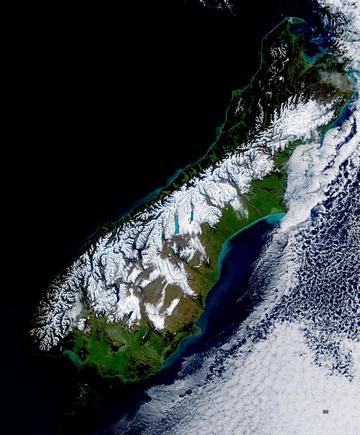The Alpine Fault
One major feature of the South Island of New Zealand is the Southern Alps, a mountain range caused by uplift along the Alpine Fault.
The Alpine Fault:
- runs for about 600km up the South Island
- is one of the world’s major faults
- marks the boundary of the Pacific and Australian Plates.
How often does the Alpine Fault cause earthquakes?
This fault has suddenly moved or ruptured four times in the past 900 years, each time causing an earthquake of about magnitude 8. Recent research has found that the average time between large earthquakes on the fault is 330 years. But there has been as little as 140 years and as much as 510 years between Alpine fault earthquakes.
Movement on the Alpine Fault
The Alpine Fault moves about 30m sideways per 1,000 years and is the fastest moving fault in the world. Each time it breaks in an earthquake, it has also moved upwards. Over time this has lifted the Southern Alps.
When will the Alpine Fault next rupture?
There is no way of predicting exactly when an earthquake will happen. There is a chance that the Alpine Fault will rupture in the next 50 to 100 years. This is based on how regularly it has ruptured in the past. The rupture will produce a large earthquake that will have a major impact on the lives of many people. In between earthquakes, the Alpine Fault is locked.
An Alpine Fault earthquake:

- The rupture will be several hundred kilometres long
- The shaking could last between one and two minutes
- Affect a much larger area than smaller earthquakes such as the Darfield earthquake.
- The aftershocks will continue for many years
- Cause widespread landslides and weaken rock, making landslides more common for many years
- Rivers may change course, will carry more sediment and therefore flood more easily
- Towns, roads, bridges, power lines and other services will be damaged
- West Coast industries such as tourism, forestry, fishing, and dairy farming will all be affected by an Alpine Fault earthquake.








